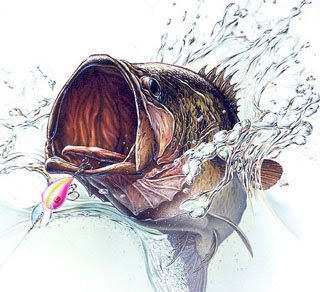
Hooking a Peacock Bass is often akin to snagging your rig on a passing nuclear attack submarine.
These fish can provide for a mighty fight and have a reputation for breaking rods and bending hooks so it’s essential to have a spare rig handy when fishing for this species. In fact sometimes its worthwhile replacing the hooks on your lures with heavy duty treble hooks when Peacock Bass Fishing.
Select a lure which is several sizes larger than you would expect to use when targeting a similar sized Largemouth Bass. Although it’s easier said than done, try not to flinch when you get a strike from a Peacock Bass, a strike from this wonderful fish is usually violent and ferocious and it sometimes is easy to jerk the bait away out of excitement in all of the commotion before the fish has a chance to properly take the lure.
Once you have hooked a Peacock Bass, you may need to play the fish for a little while, pound for pound Peacock Bass put up a much stronger fight than a similar sized Largemouth Bass.
Much like with any fish, be prepared to experiment with different techniques as conditions can dictate their behavior.
As far as selecting lures specifically for Peacock Bass Fishing, there are a number of manufactures which specialize in making lures for this species.
Things to look for when purchasing a lure for Peacock Bass
• Triple wrapped split pins
• Strong large treble hooks
• Long screw eyes
• Hook hangers deep within the body of the lure
Some of the best specialized Peacock Bass Baits to use would be Luhr Jensen’s Big Game Wood Chopper, Ripper and Peacock Special, Eatem-Up Monster Prop, Temptress and Sam Griffin’s Super Zip.
Any Propeller Baits should be worked with a medium to rapid paced aggressive rip of the rod, to impart an audible ripping sound and leave a visible bubble trail; the bubble trail is a vital attractant.
After a long cast reel up any slack and then use your wrists to snap the rod tip towards the water. Using short, aggressive rips to move the bait in a series of quick successions is much more productive than long gliding rips.
Usually the faster and more aggressive you rip your bait the more Peacock Bass will be enticed to strike.













